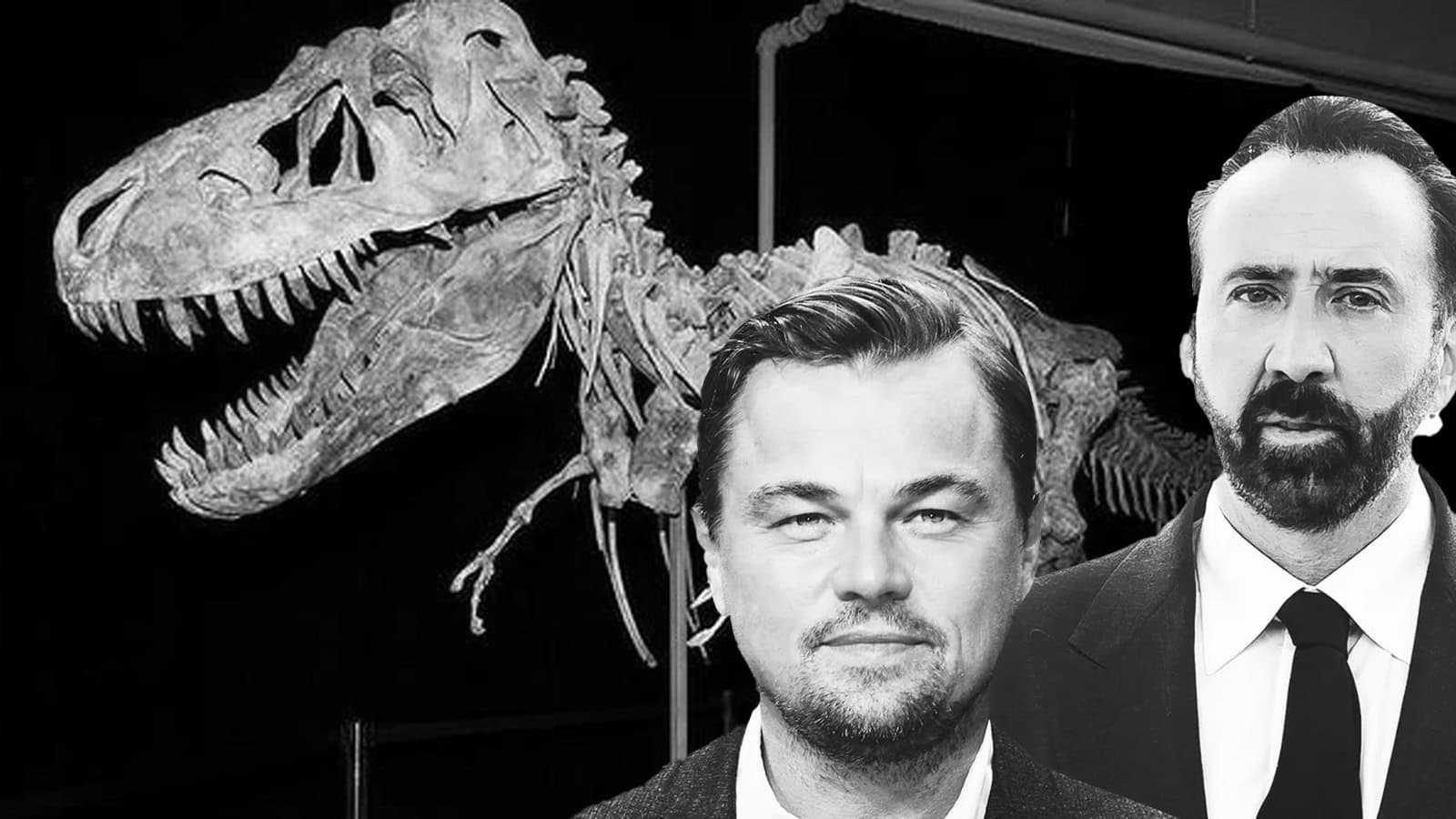Photo: Getty Images and the cut
In the world of celebrity collecting, few stories are as intriguing as the 2007 bidding war between Leonardo DiCaprio and Nicolas Cage over a prehistoric treasure. The object of their desire? A 67-million-year-old Tyrannosaurus Bataar skull that would later become embroiled in an international controversy.
The Beverly Hills Battleground
At a Beverly Hills auction in 2007, DiCaprio and Cage went head-to-head for the rare fossil. In a twist worthy of a Hollywood script, Cage emerged victorious, securing the prized skull for $276,000. This high-profile purchase highlighted the growing trend of celebrities investing in paleontological specimens.
From Treasure to Trouble
What seemed like a crowning addition to Cage’s collection soon became a legal nightmare. In 2013, it was revealed that the skull had been illegally smuggled out of Mongolia. The fossil was part of a larger cache of illegally imported specimens obtained from Eric Prokopi, a commercial paleontologist who later pleaded guilty to smuggling charges.
A Voluntary Return
To his credit, upon learning of the skull’s questionable provenance, Cage took swift action. In 2015, he voluntarily relinquished the fossil to U.S. authorities, who then began the process of returning it to Mongolia. This gesture earned Cage praise from both the legal and scientific communities.
The Broader Impact
The DiCaprio-Cage bidding war and its aftermath shed light on the complex world of fossil trading. It highlighted the ongoing struggle of countries like Mongolia to protect their natural heritage from well-heeled collectors and the black market.
DiCaprio’s Continued Interest
While DiCaprio lost this particular auction, his interest in fossils and natural history has been well-documented. As a child, he enjoyed visiting natural history museums and has maintained a fascination with extinct animals. However, the full extent of his fossil collection, if any, remains private.
Complex Ethical Considerations in the World of Collecting
This story serves as a reminder of the complex ethical considerations surrounding the acquisition of historical artifacts. It underscores the importance of due diligence in verifying the provenance of such significant specimens.
The DiCaprio-Cage fossil saga remains a fascinating intersection of Hollywood glamor, natural history, and international law. It demonstrates that even in the world of multimillion-dollar movie deals, the allure of holding a piece of Earth’s ancient past can spark fierce competition and unforeseen consequences.
As the dust settles on this particular fossil feud, one thing is clear: the obsession for paleontology among wealthy collectors continues to capture the public imagination, blurring the lines between entertainment, science, and collecting.




